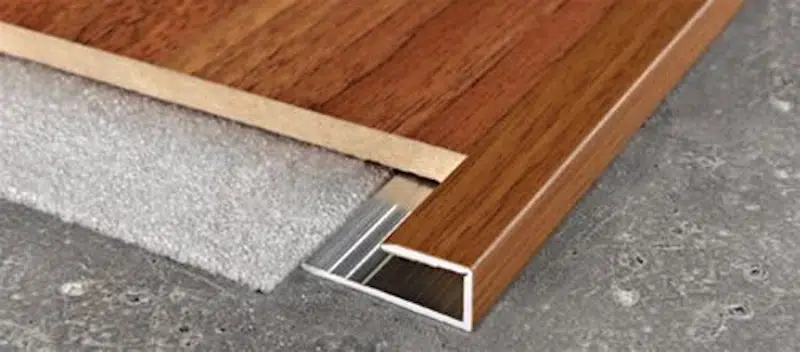Elevate Your Flooring: The Art of Transition Bars and Finishing Profiles
The allure of a beautifully crafted floor can be swiftly overshadowed by poorly chosen or mismatched transition bars and finishing profiles. Often overlooked, these small details play a crucial role in not only the aesthetics but also the functionality of your flooring. In this blog, we’ll delve into the significance of transition bars and finishing bars, exploring how they can either enhance or compromise the overall appeal of your timber, laminate, bamboo, or cork flooring.
1. The Downfall of Ugly Bars and Finishing Profiles:
Imagine investing in a stunning hardwood floor or a sleek laminate design, only to have the entire visual appeal marred by unsightly transition bars. These bars, if not chosen thoughtfully, can disrupt the seamless flow of your flooring, turning what could have been a masterpiece into a haphazard arrangement. Therefore, selecting transition bars that complement the color, texture, and style of your flooring is imperative to preserve the aesthetic harmony.
2. Avoiding Trip Hazards:
Height differences between different flooring materials or between rooms can create potential trip hazards if not addressed with the right transition bars. A poorly chosen or poorly installed transition bar can create an uneven surface, posing risks to both the aesthetics and safety of your space. Opting for profiles that seamlessly bridge height gaps ensures not only a visually appealing transition but also a secure and hazard-free environment.
3. Ribbed Commercial Bars vs. Domestic Finishing Profiles:
Commercial-grade transition bars are often ribbed and designed for heavy-duty use. However, in a domestic setting, these utilitarian bars can appear out of place and lack the finesse required for a home environment. Careful consideration must be given to choosing transition bars that align with the sophistication and elegance of residential spaces while maintaining their functionality.
4. Diverse Color Options:
Transition bars are not just functional; they’re an opportunity to add a touch of style to your flooring. With options like brushed silver, color-matched foil-wrapped, and powder-coated bars that match your joinery, you can seamlessly integrate these elements into your design scheme. The right color choice can either make the bars blend discreetly or stand out as a deliberate design feature.
5. Versatile Profiles for Every Need:
Transition bars come in various profiles to address specific requirements. Whether you need a box edge for a clean and minimalistic look, a ramp for smooth height transitions, an expansion profile to accommodate flooring movement, or a transition bar for seamless room connections, there’s a profile for every need. Understanding the purpose of each profile ensures a tailored solution for your flooring.
6. Discretion or Distinction:
Consider whether you want your transition bars to be as discreet as possible, seamlessly blending into the flooring, or if you want them to make a statement. Elements like black stair nosing can serve as both a safety feature and a design accent, turning what could be a functional necessity into a distinctive feature of your flooring design.
Conclusion:
Transition bars and finishing bars may seem like minor details, but their impact on the overall aesthetics and functionality of your flooring is significant. By choosing the right profiles, colors, and styles, you can elevate your flooring to new heights, creating a cohesive and visually pleasing environment. At The Natural Flooring Company, we stock a diverse range of transition bars to ensure that every detail of your flooring reflects your unique style and meets the highest standards of design and safety.


